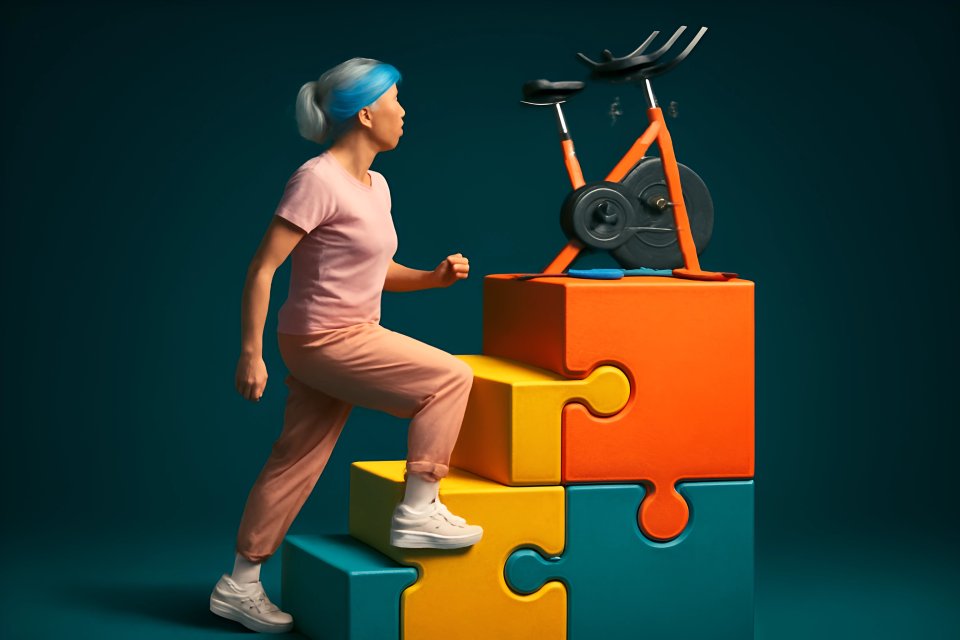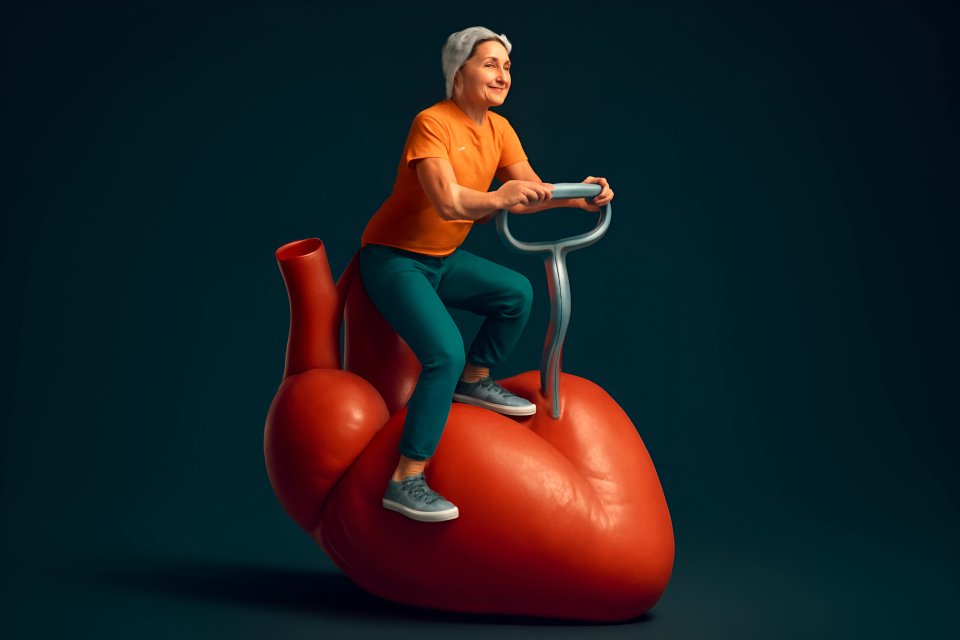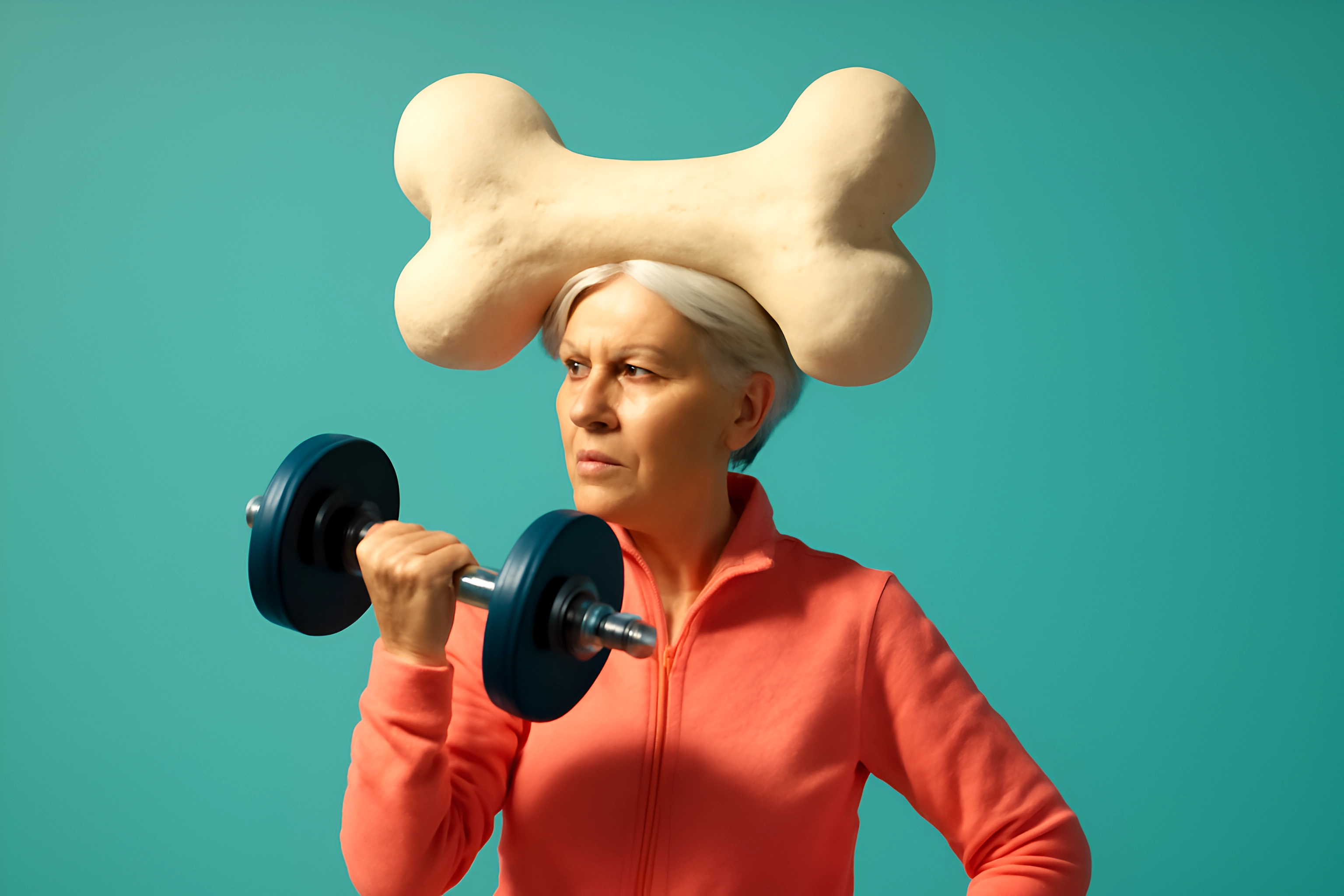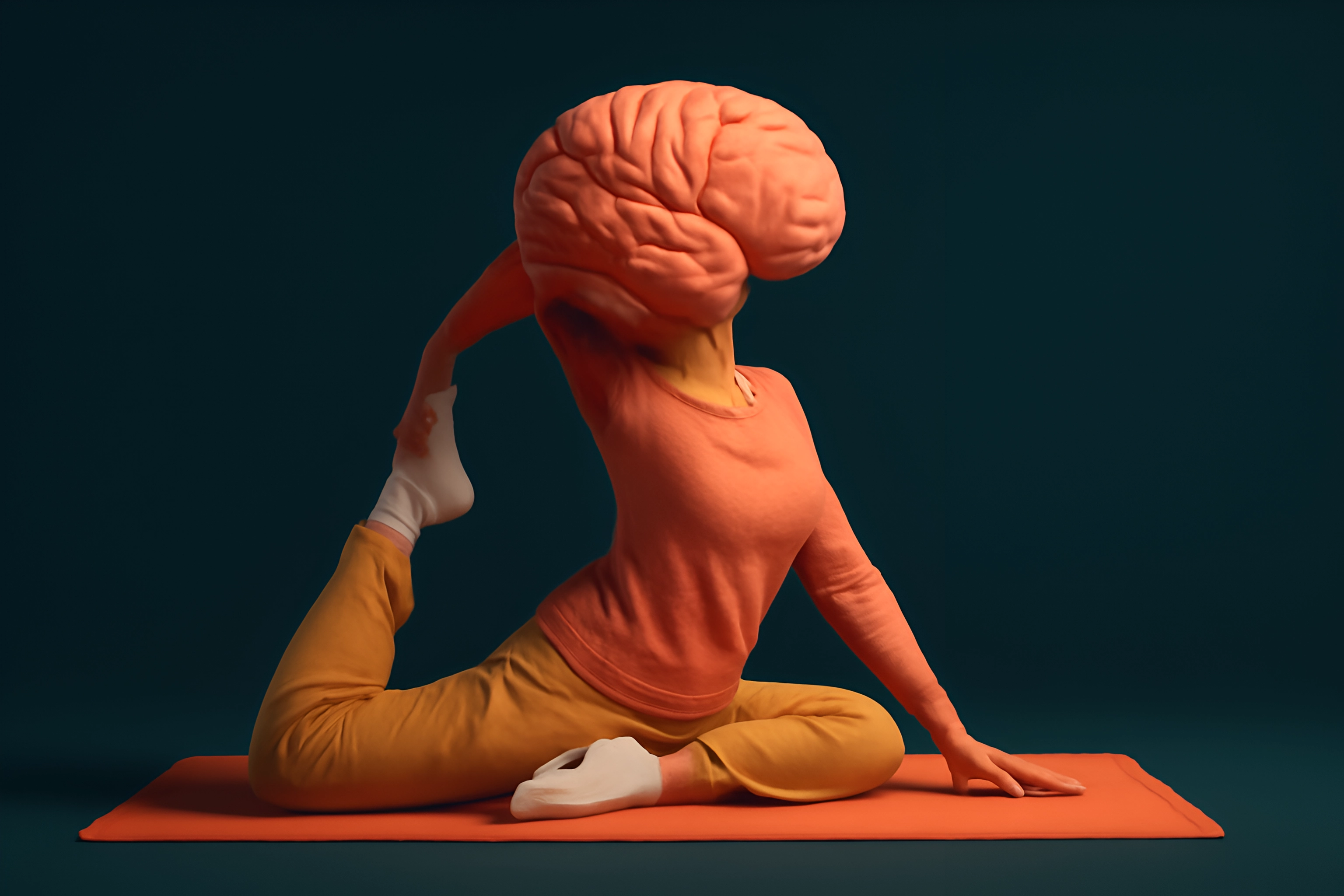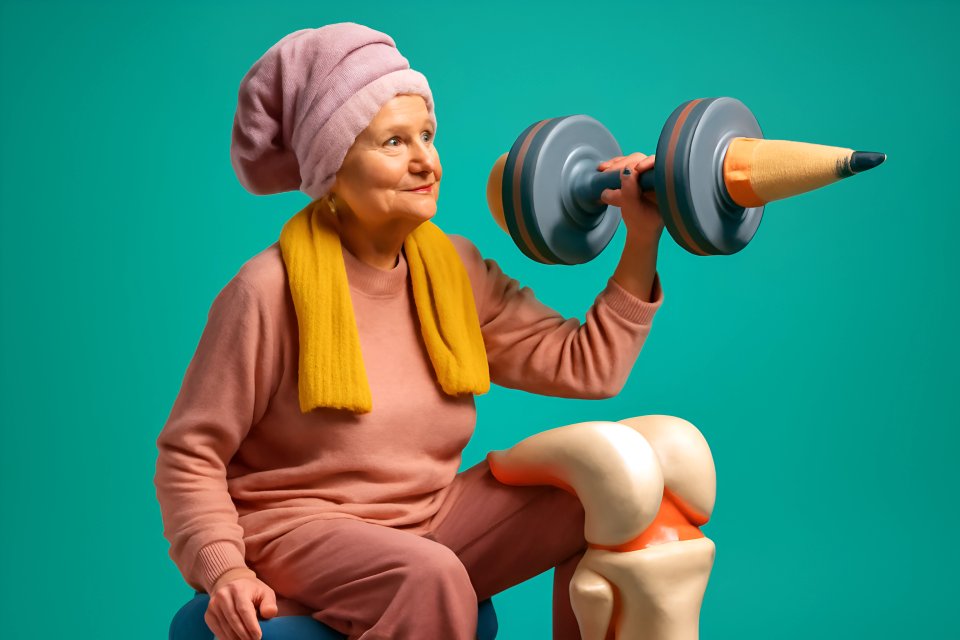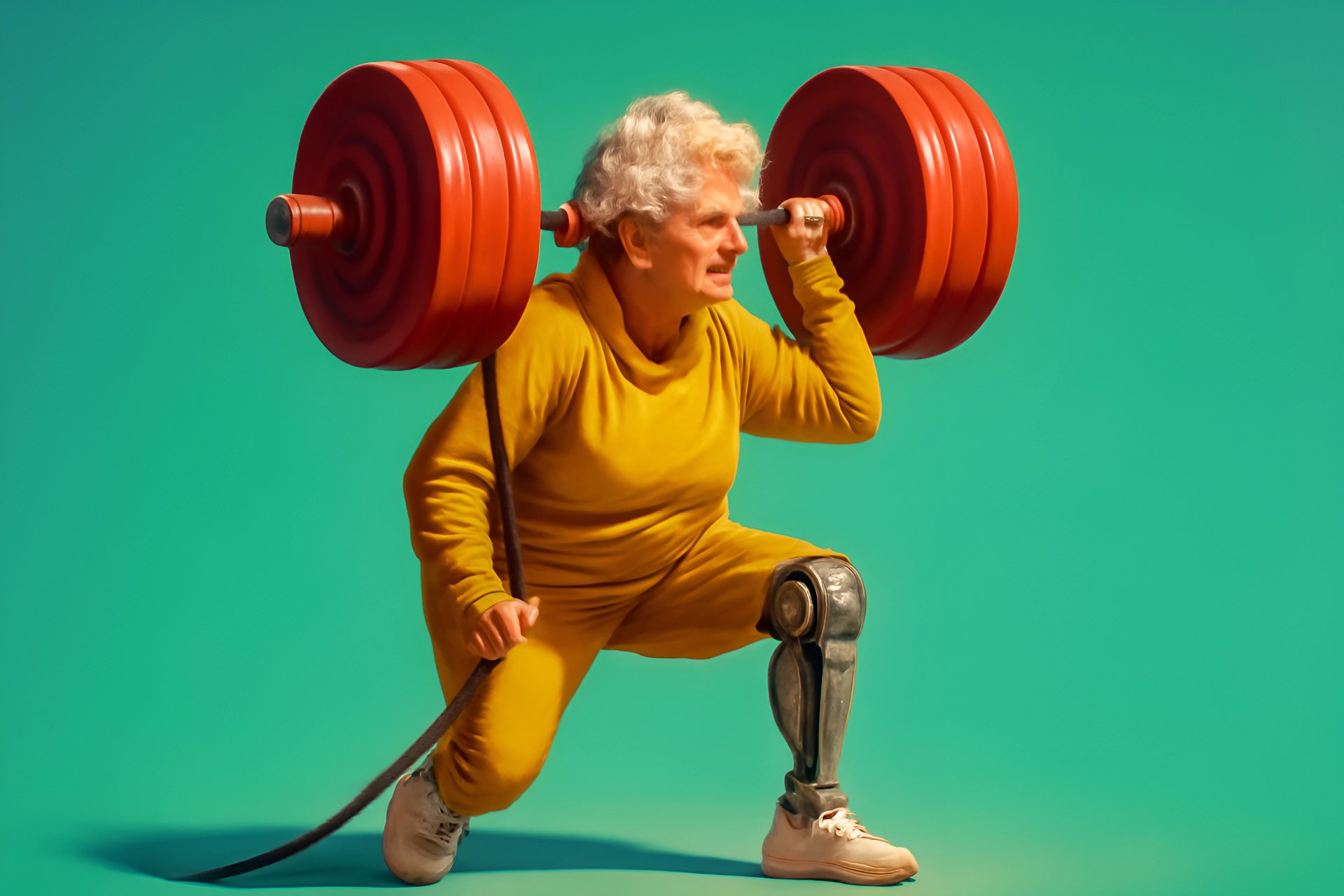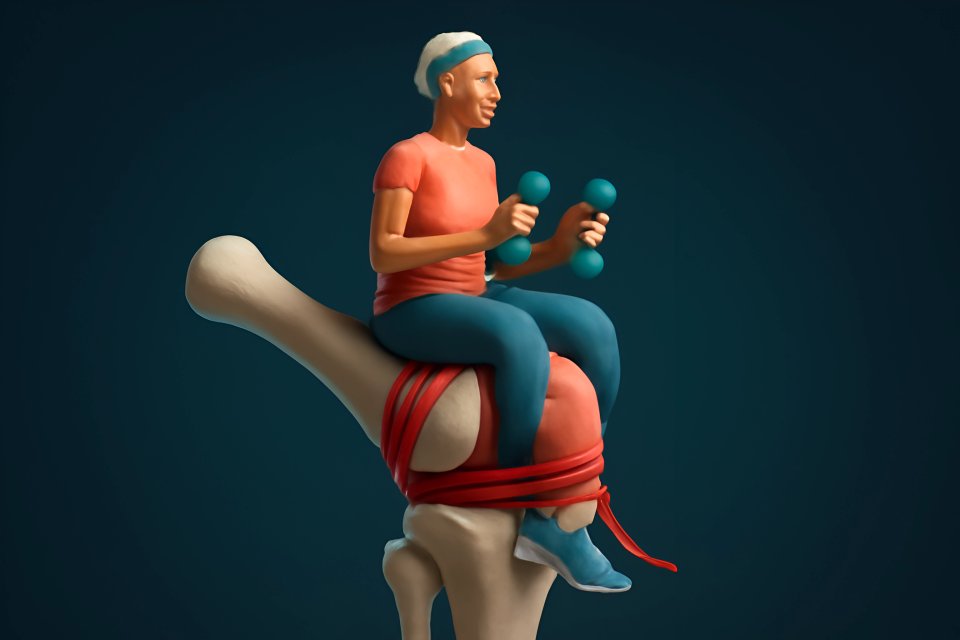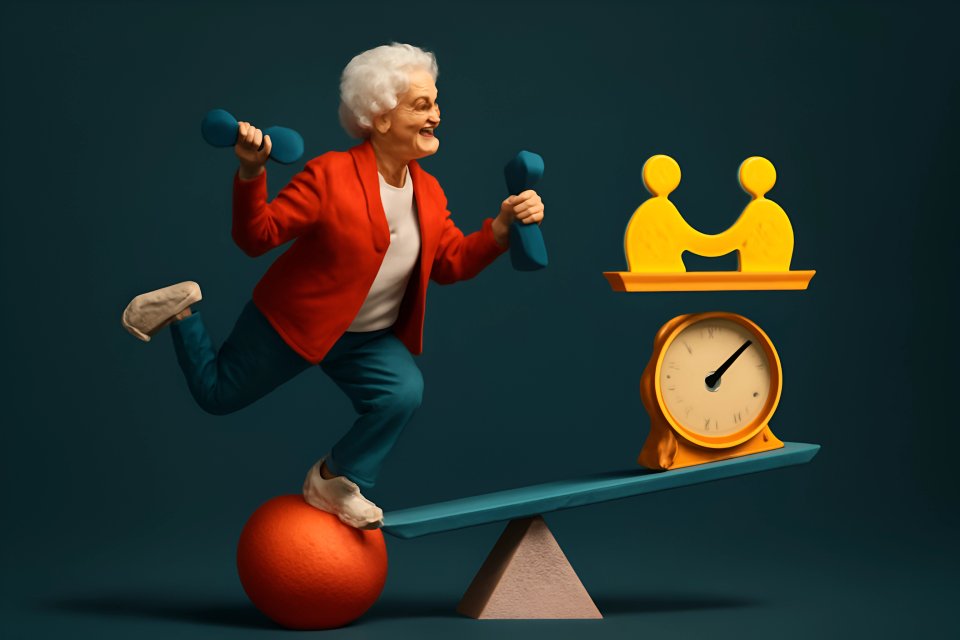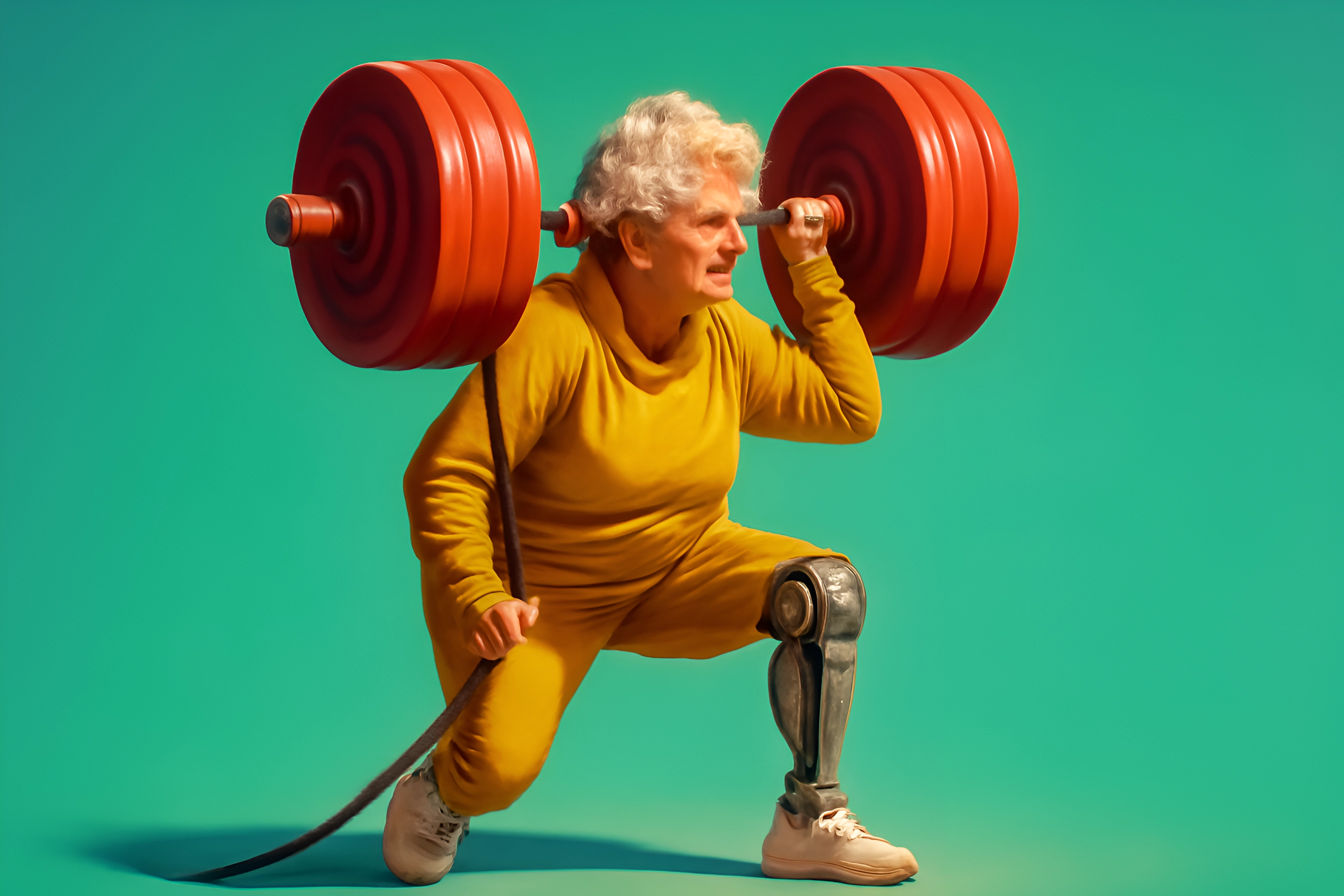
Remember when opening a stubborn jar or carrying all the groceries in one trip felt effortless? That raw, functional strength is something we often take for granted in our youth. As we age, maintaining that everyday power becomes a conscious choice—and it's one of the most empowering choices we can make for our health, security, and independence.
Let's be honest. You may have noticed that some activities require a little more effort than they used to. This is a natural part of life, linked to a process called sarcopenia, where adults can lose 3-5% of their muscle mass each decade after 30. But here’s the secret the fitness industry doesn't always tell you: this decline is not your destiny.
You hold the power to fight back, and you don't need punishing workouts or heavy weights to do it. The solution is adaptive resistance training for seniors, a smart, safe, and incredibly effective way to build and maintain the strength you need for the life you want to live. This guide will show you exactly how to reclaim your strength, one gentle, intentional movement at a time.
The "Why" Behind the Workout: More Than Just Muscle
Why should strength training become your new best friend? Because the benefits go far beyond building bigger biceps. It’s about securing your future, protecting your body, and preserving the freedom to live life on your own terms.
First and foremost, resistance training is your number one weapon against age-related muscle loss. Every time you challenge your muscles, you send a powerful signal to your body: I still need this strength. This simple act helps preserve precious muscle tissue, which is metabolically active and crucial for a healthy body composition. In fact, building muscle is one of the most effective ways to support your energy levels, and you can find more practical tips for boosting metabolism with daily activities to complement your efforts.
But the magic doesn't stop there. When you put a gentle load on your muscles, you also stimulate your bones, encouraging them to become stronger and denser. This is a critical defense against osteoporosis and fractures, giving you a more resilient frame. Furthermore, stronger leg and core muscles are directly linked to better balance and stability, which research from the CDC shows is essential for preventing falls and related injuries. This isn't just about exercise; it's about the confidence to walk on uneven ground, play with your grandkids without fear, and move through your world with unshakable stability.
Gentle Strength Training, Redefined
So, what exactly is "adaptive" resistance training? Forget the images of bodybuilders grunting under massive weights. This is something entirely different—it’s strength training that is intelligently tailored to you.
The word "adaptive" simply means modifying exercises to fit your unique body, your energy levels on any given day, and your personal goals. It throws the old "no pain, no gain" mantra out the window and replaces it with a much smarter philosophy: smart, sustainable gains. It’s about working with your body, not against it, to build strength that lasts a lifetime.
This approach is built on three simple but powerful pillars. First is a relentless focus on form, because how you perform a movement is infinitely more important than how much weight you're lifting. Second is the principle to start low and go slow, beginning with just your bodyweight or very light resistance to allow your muscles and joints to adapt safely. Finally, and most importantly, is learning to listen to your body, understanding the difference between the satisfying warmth of a working muscle and the sharp, unwelcome signal of joint pain.
Getting Started Safely: 5 Minutes to a Better Workout
Before you jump into your first workout, taking a few moments to prepare is the most important step you can take. This simple safety checklist ensures your journey into strength training is positive, effective, and injury-free from day one.
The most important rep you'll ever do is having a quick chat with your doctor. Before starting any new fitness program, it's always wise to get clearance from a healthcare professional who understands your personal health history. They can provide personalized advice and give you the green light to proceed with confidence.
Next, choose your tools—and the good news is, you don't need a fancy gym membership. Your own bodyweight is the perfect starting point for many exercises. Other fantastic, low-cost options include resistance bands, which are gentle on the joints, and light dumbbells. You can even use household items like soup cans or water bottles to get started. A sturdy chair is also an invaluable tool, providing support for balance and seated exercises.
Finally, never skip your warm-up and cool-down. Just five minutes of gentle movement, like marching in place or doing arm circles, will prepare your muscles for activity. Afterward, a few minutes of gentle stretching will help improve flexibility and kick-start the recovery process.
Your Starting 5: Gentle Exercises with Senior Exercise Modifications
Ready to get started? These five foundational movements are the perfect introduction to adaptive resistance training. They target major muscle groups, mimic everyday actions, and include simple modifications to meet you where you are today.
1. The Chair Squat
This is the king of functional exercises. It strengthens your legs, glutes, and core, giving you the power to rise from any chair with ease and improving your overall balance.
How-to: Stand in front of a sturdy chair with your feet shoulder-width apart. Keeping your chest up and back straight, slowly lower your hips back and down as if you're about to sit. Either tap the chair lightly or sit down completely before driving through your heels to stand back up.
Adaptive Tip: For extra support, lightly hold onto the back of another chair or a countertop. Only lower as far as feels comfortable for your knees; even a small movement builds strength. As AARP notes, the squat is one of the best exercises for building functional strength at any age.
2. The Wall Push-Up
This brilliant modification builds upper body and shoulder strength without putting any stress on your wrists or back. It helps with everything from pushing open a heavy door to getting up from the floor.
How-to: Stand facing a wall, about arm's length away. Place your palms on the wall, slightly wider than your shoulders. Keeping your body in a straight line from your head to your heels, bend your elbows and slowly lower your chest toward the wall. Gently push back to the starting position.
Adaptive Tip: To make the exercise easier, simply stand closer to the wall. To increase the challenge, step your feet further back. The key is to maintain a rigid torso and avoid letting your hips sag.
3. The Seated Row with Resistance Band
Poor posture can contribute to back pain and a stooped appearance. This exercise is the perfect antidote, strengthening the muscles in your upper back to help you stand tall and proud.
How-to: Sit tall in a chair with your feet flat on the floor. Loop a resistance band around the soles of your feet, holding an end in each hand. With your arms extended, pull the band toward your lower ribs, focusing on squeezing your shoulder blades together. Slowly return to the start.
Adaptive Tip: Begin with a light resistance band. The focus should be on the "squeeze" between your shoulder blades, not on pulling with your arms. This movement is one of the best ways to build upper-body strength with resistance bands safely.
4. The Glute Bridge
Your glutes are the powerhouse of your body, but they can become weak from too much sitting. This exercise wakes them up, strengthening your lower back and hips to support your spine and improve your walking gait.
How-to: Lie on your back with your knees bent, feet flat on the floor, and arms by your sides. Gently squeeze your glutes and lift your hips off the floor until your body forms a straight line from your shoulders to your knees. Hold for a moment, then slowly lower back down.
Adaptive Tip: If you have a sensitive back, only lift your hips a few inches off the floor to start. Avoid arching your back or straining your neck; the work should be felt in your glutes and hamstrings.
5. The Seated Bicep Curl
From carrying groceries to lifting a grandchild, strong arms are essential for daily independence. The seated bicep curl is a safe and effective way to build that functional strength.
How-to: Sit upright in a chair, holding a light dumbbell or soup can in each hand with your palms facing forward. Keeping your elbows tucked into your sides, slowly curl the weights up toward your shoulders. Squeeze your biceps at the top, then slowly lower the weights back down.
Adaptive Tip: The most important part of this exercise is control. Perform the movement slowly, especially on the way down. You can even start with no weight at all, simply making a fist and focusing on the muscle contraction to perfect the form.
How to Build a Habit That Lasts
Knowing the exercises is one thing; turning them into a consistent habit is the key to long-term success. The goal isn't perfection, but consistency. Here’s a simple framework to get you started.
Aim to perform your strength routine on 2-3 non-consecutive days per week. This gives your muscles about 48 hours to recover and rebuild, which is when they actually get stronger. For each exercise, start with 1-2 sets of 8-12 repetitions. The weight or resistance should be light enough that you can complete all reps with perfect form, but challenging enough that the last couple of reps feel like work.
As you get stronger, remember that "progression" doesn't always mean lifting heavier. You can progress by adding a few more repetitions, performing another set, or simply improving your form and control. For a complete plan on weaving these movements into a balanced week, explore our guide on how to build a low-impact exercise routine.
| Day | Activity | Focus | Duration |
|---|---|---|---|
| Monday | Adaptive Resistance Training | Full Body | 20-30 mins |
| Tuesday | Active Recovery | Gentle Walk / Stretching | 30 mins |
| Wednesday | Low-Impact Cardio | Brisk Walking / Swimming | 30-40 mins |
| Thursday | Adaptive Resistance Training | Full Body | 20-30 mins |
| Friday | Active Recovery | Gentle Walk / Stretching | 30 mins |
| Saturday | Optional Activity | Gardening / Dancing | As desired |
| Sunday | Rest | Full Rest Day | - |
Your Questions on Gentle Strength Training, Answered
It's natural to have questions when starting something new. Here are answers to some of the most common concerns we hear at FitOverFifty.
Is it really safe to do resistance training if I have arthritis?
Yes, it can be incredibly beneficial. Research shows that strengthening the muscles around a joint can improve stability and reduce pain. The key is to listen to your body and work within a pain-free range of motion. For more detailed guidance, check out our post on practical strength training modifications for seniors with joint pain.
What’s the difference between normal muscle soreness and an injury?
This is a crucial distinction. Normal muscle soreness, or DOMS, feels like a general, dull ache in the muscle you worked and typically appears 24-48 hours after exercise. An injury, on the other hand, is often a sharp, sudden, or localized pain in a joint or muscle that doesn't go away with rest. If you feel sharp pain during an exercise, stop immediately.
How soon will I see results from these low-impact resistance workouts?
You will likely feel results faster than you see them. Many people report feeling stronger and having more energy within just a few weeks. Noticeable changes in muscle tone and definition typically take 8-12 weeks of consistent effort, but the functional benefits—like easier stair climbing—start much sooner.
Can I do these exercises every day?
It's best not to. Your muscles need time to repair and grow stronger, and that happens on your rest days. Aim for 2-3 strength sessions per week on non-consecutive days. On your "off" days, focus on active recovery like walking or gentle stretching.
Your Journey to a Stronger You Starts Today
Let's put it all together. Age-related muscle loss is a reality, but it doesn't have to be your story. Adaptive resistance training is a safe, scientifically-backed, and deeply empowering tool that puts you back in the driver's seat of your health.
Strength isn't about a number on a dumbbell; it's about the freedom and confidence to live your life to the fullest. It's the power to say "yes" to new adventures and the security of knowing your body can support you. Every chair squat and every wall push-up is a powerful investment in a more vibrant, active, and resilient you.
The journey of a thousand miles begins with a single step. Your journey to a stronger you begins with a single repetition.
Which of these exercises will you try first? Share your plans in the comments below! We love to hear from our community.
For more expert tips and weekly fitness inspiration tailored for life over 50, subscribe to the FitOverFifty newsletter







